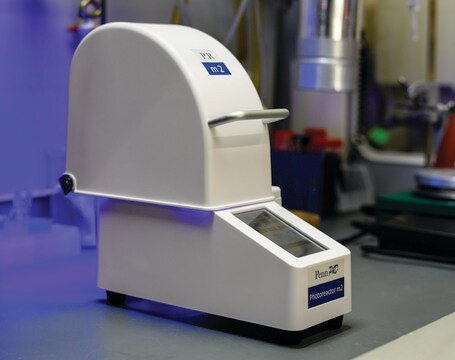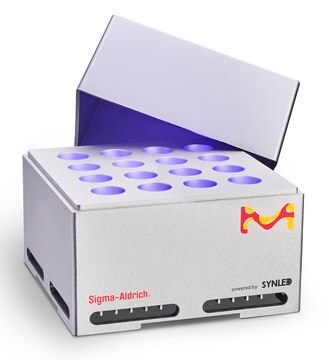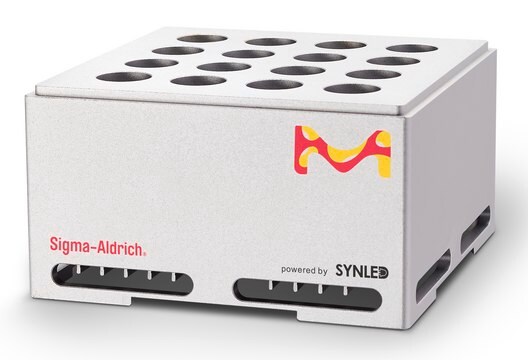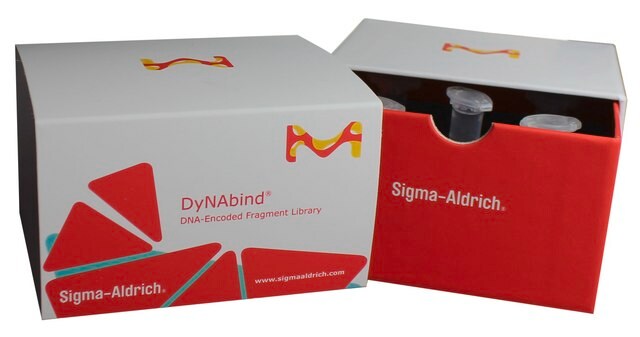Z744031
365nm Light Source
Sinónimos:
Penn PhD Photoreactor M2 light
About This Item
Productos recomendados
idoneidad de la reacción
reaction type: Photocatalysis
reagent type: catalyst
Descripción general
Features and Benefits of Penn PhD Photoreactor M2
- Modular design allows for use with a variety of wavelengths 365nm – 450nm
- 360 degree reflective environment maximizes surface area photon capture
- Light shield interlock prevents user exposure to harmful light rays
- Interactive touch screen controls reaction parameters
- Intertek ETL, CE, and CB approved
- User defined parameters including temperature, light intensity, fan speed and stirring
- Auto stop, pause and reset options
- Supports vial sizes gc, 4, 8, 20, 40 ml
- Temp feedback using a k-type thermocouple
Photocatalysis Technology Spotlight
Producto relacionado
Elija entre una de las versiones más recientes:
Certificados de análisis (COA)
Lo sentimos, en este momento no disponemos de COAs para este producto en línea.
Si necesita más asistencia, póngase en contacto con Atención al cliente
¿Ya tiene este producto?
Encuentre la documentación para los productos que ha comprado recientemente en la Biblioteca de documentos.
Los clientes también vieron
Artículos
Photoredox catalysis is a powerful synthetic methodology to form challenging covalent bonds using light irradiation. It is effective for light-driven polymer and small molecule synthesis.
Csp2- and Csp-hybridized coupling reactions are established catalytic approaches. However, multi-step Csp3- and Csp2-coupling reactions of boronic acids and related derivatives are still limited by ineffective two-electron transmetalation reactions.
The application of radical chemistry towards organic synthesis is well-developed and wide-reaching, though often hampered by a dependence on toxic radical initiators.
While Markovnikov alkene reactivity is very well developed and utilized commonly in the synthesis of commodity and research chemicals, catalytic access to the anti-Markovnikov-selective adducts is a much less-developed endeavor.
Nuestro equipo de científicos tiene experiencia en todas las áreas de investigación: Ciencias de la vida, Ciencia de los materiales, Síntesis química, Cromatografía, Analítica y muchas otras.
Póngase en contacto con el Servicio técnico









